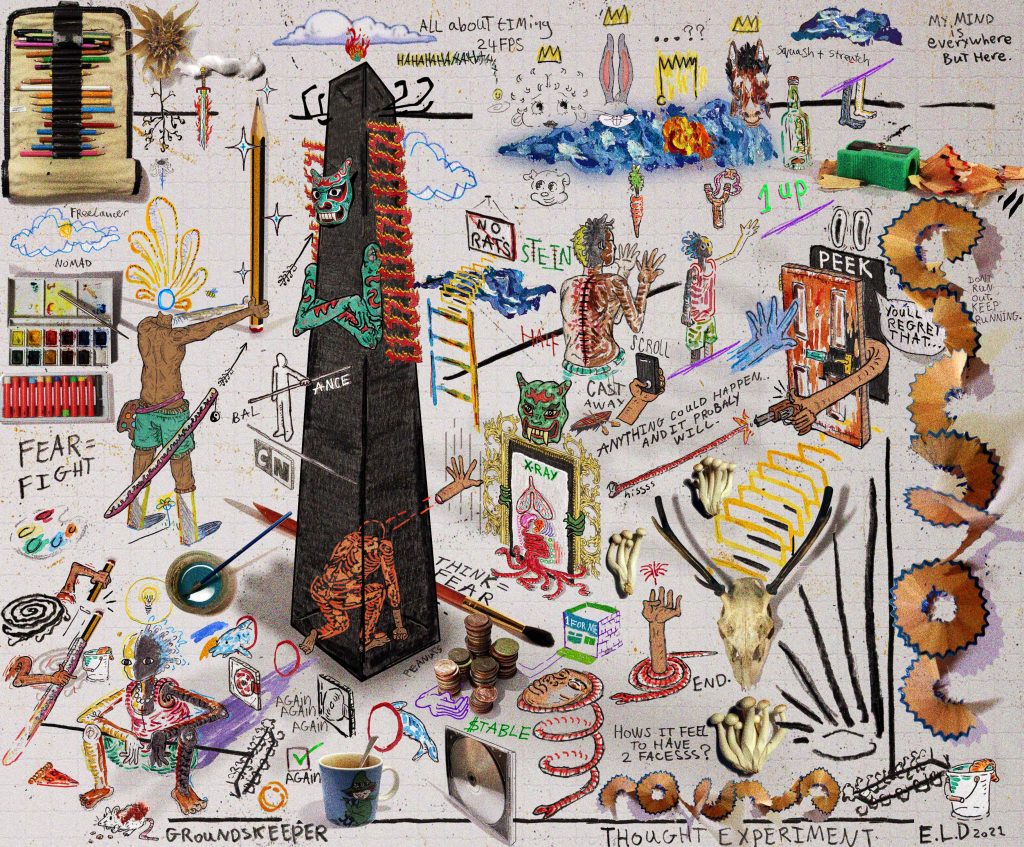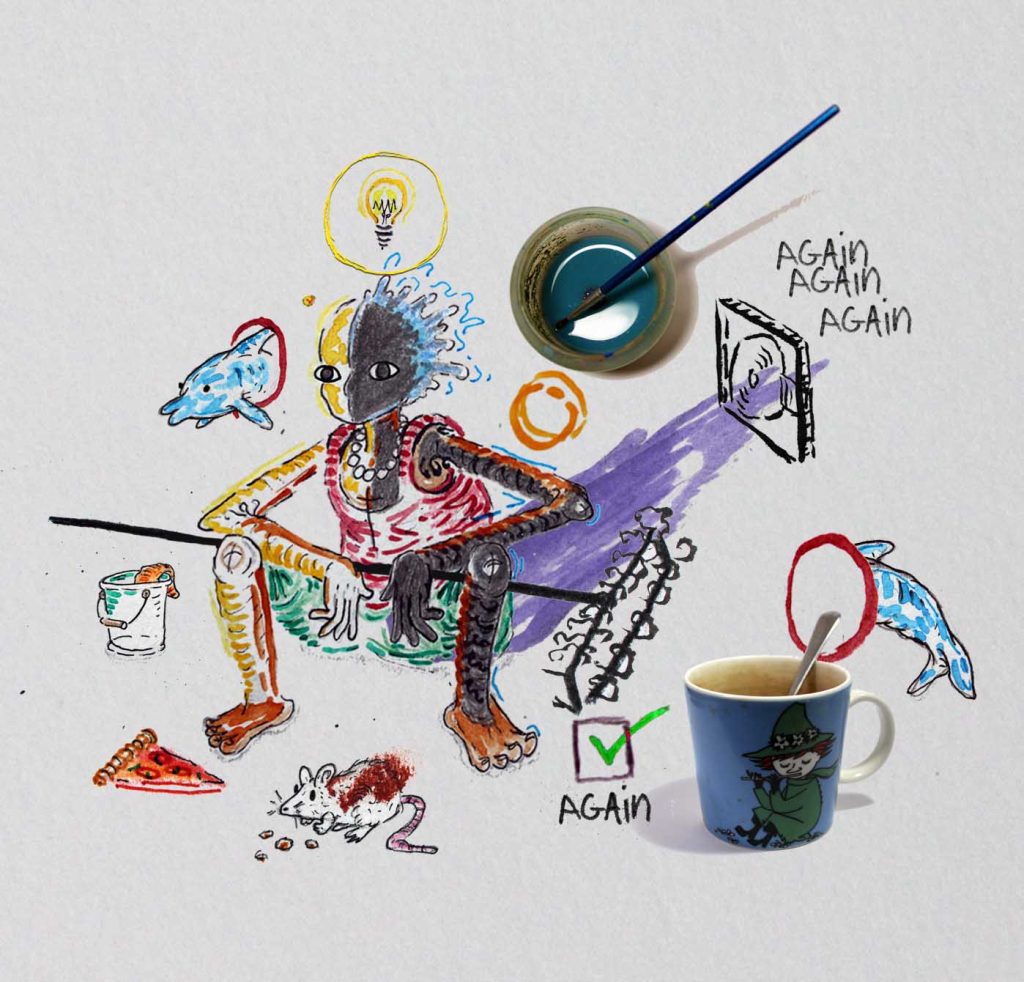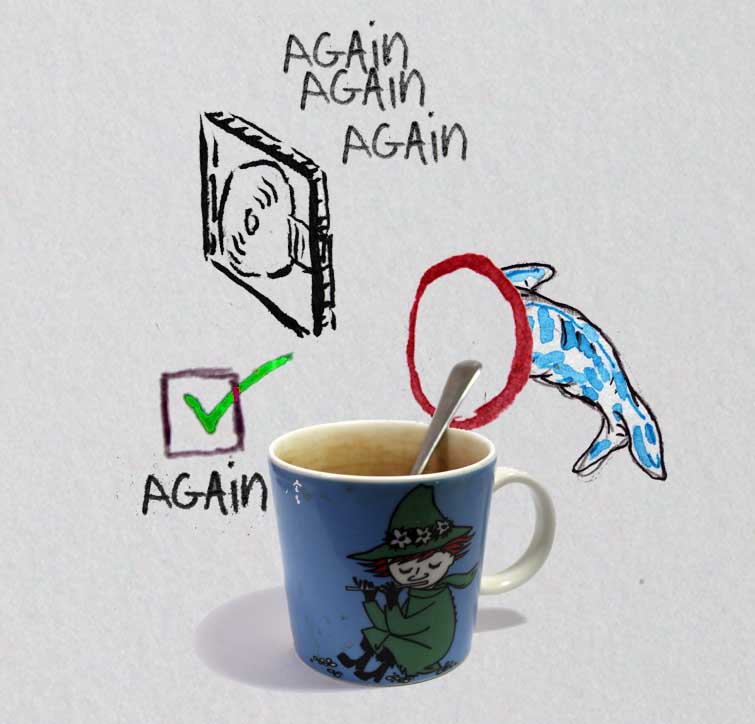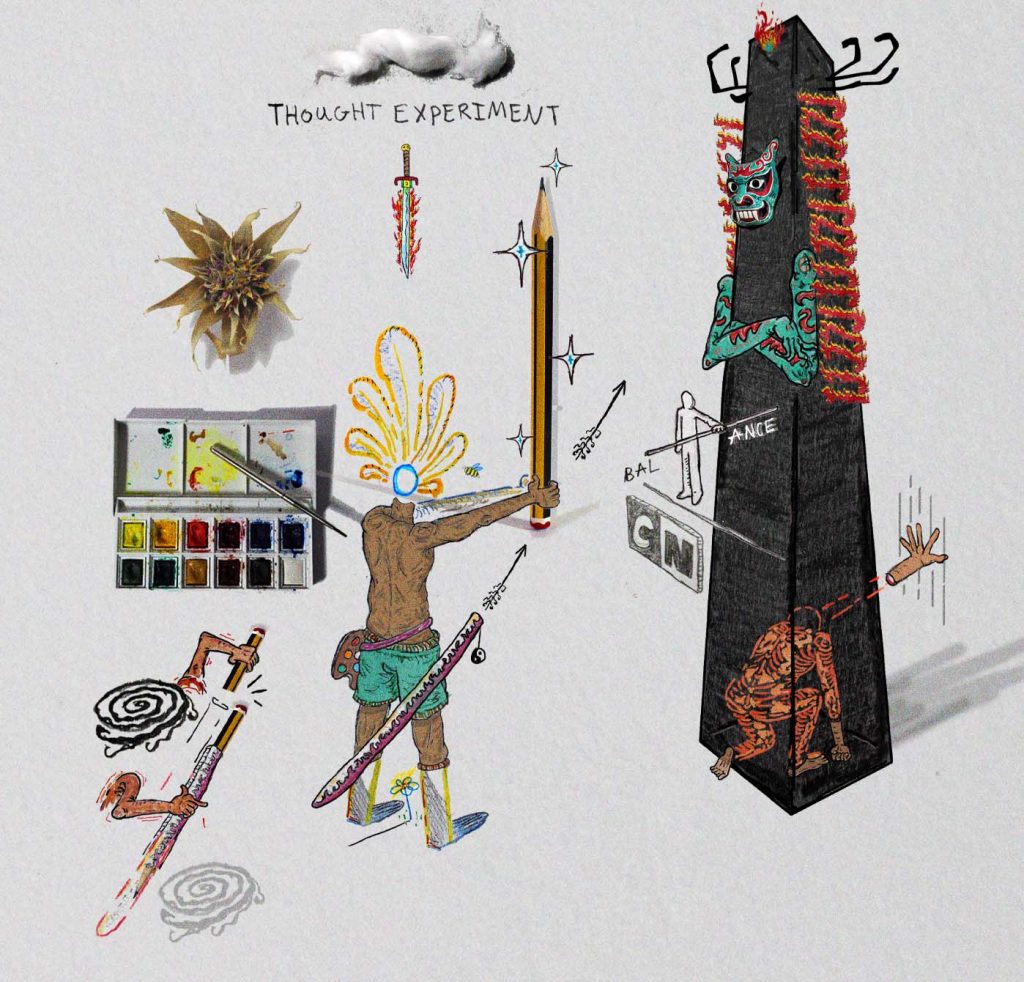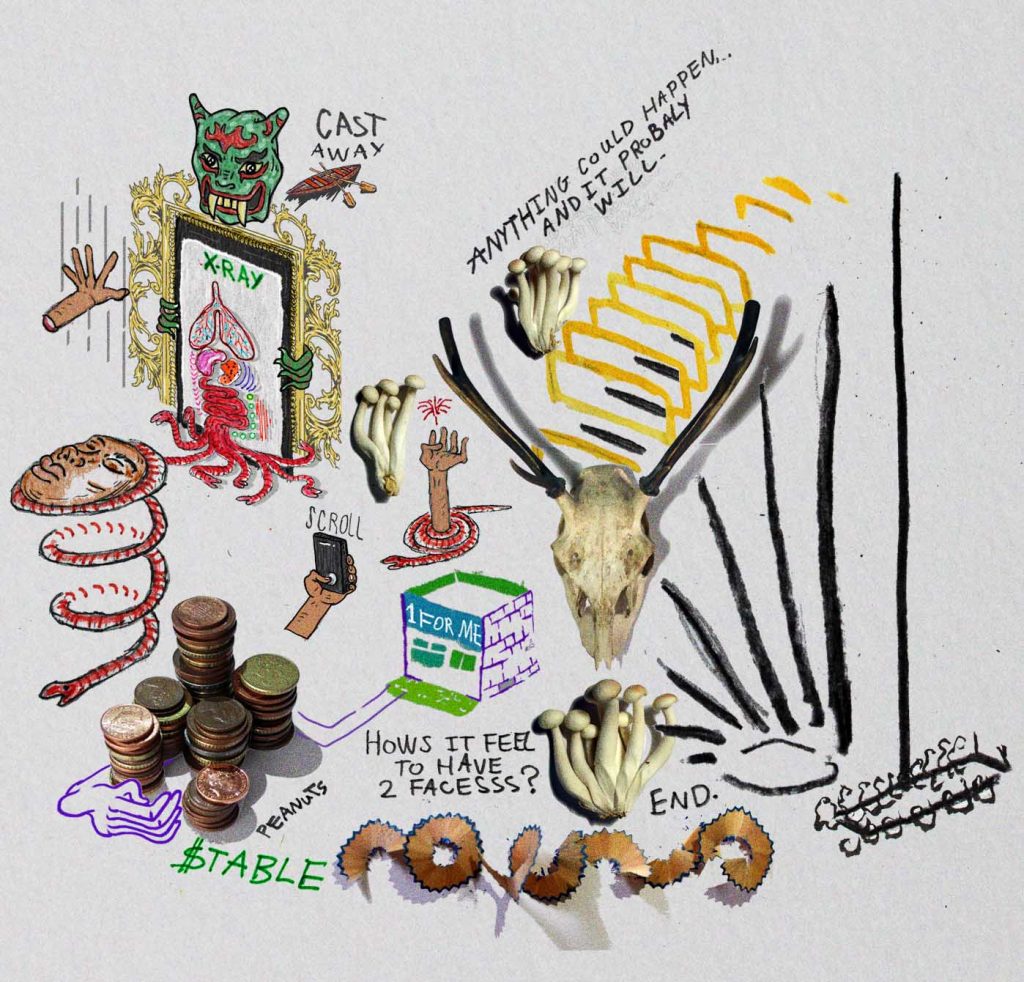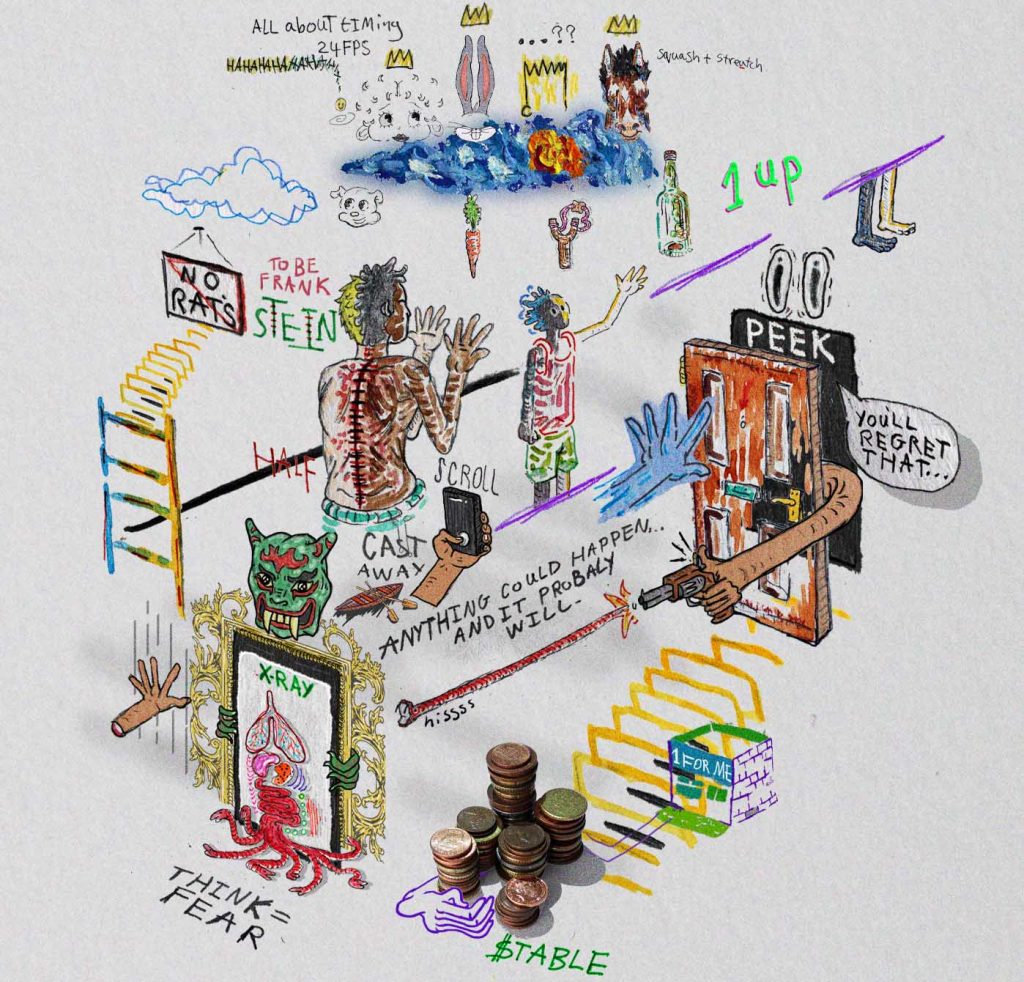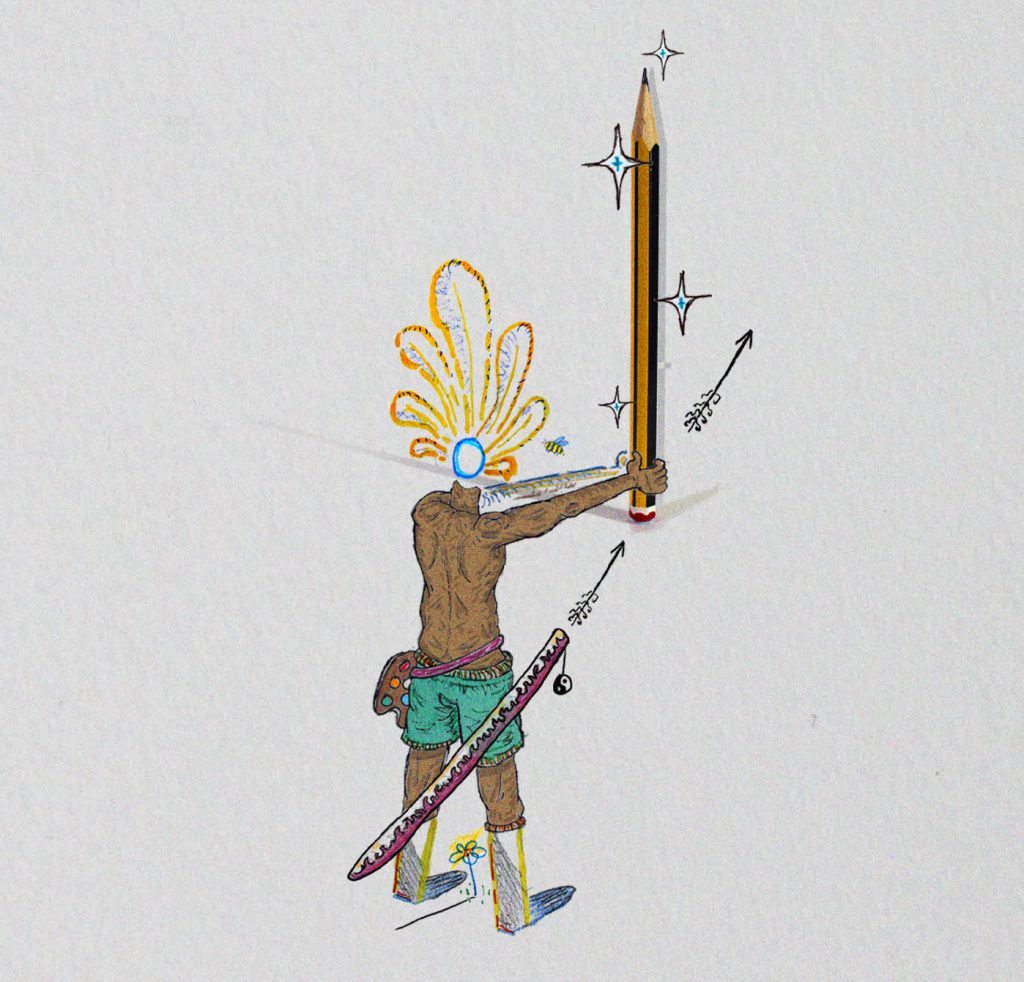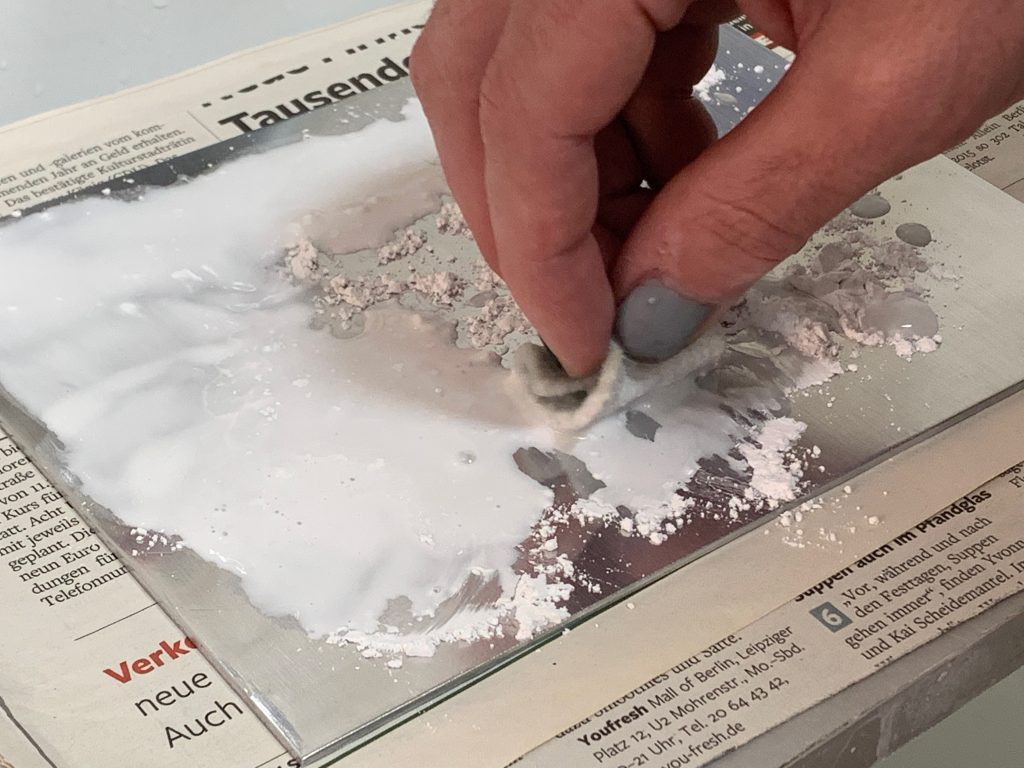
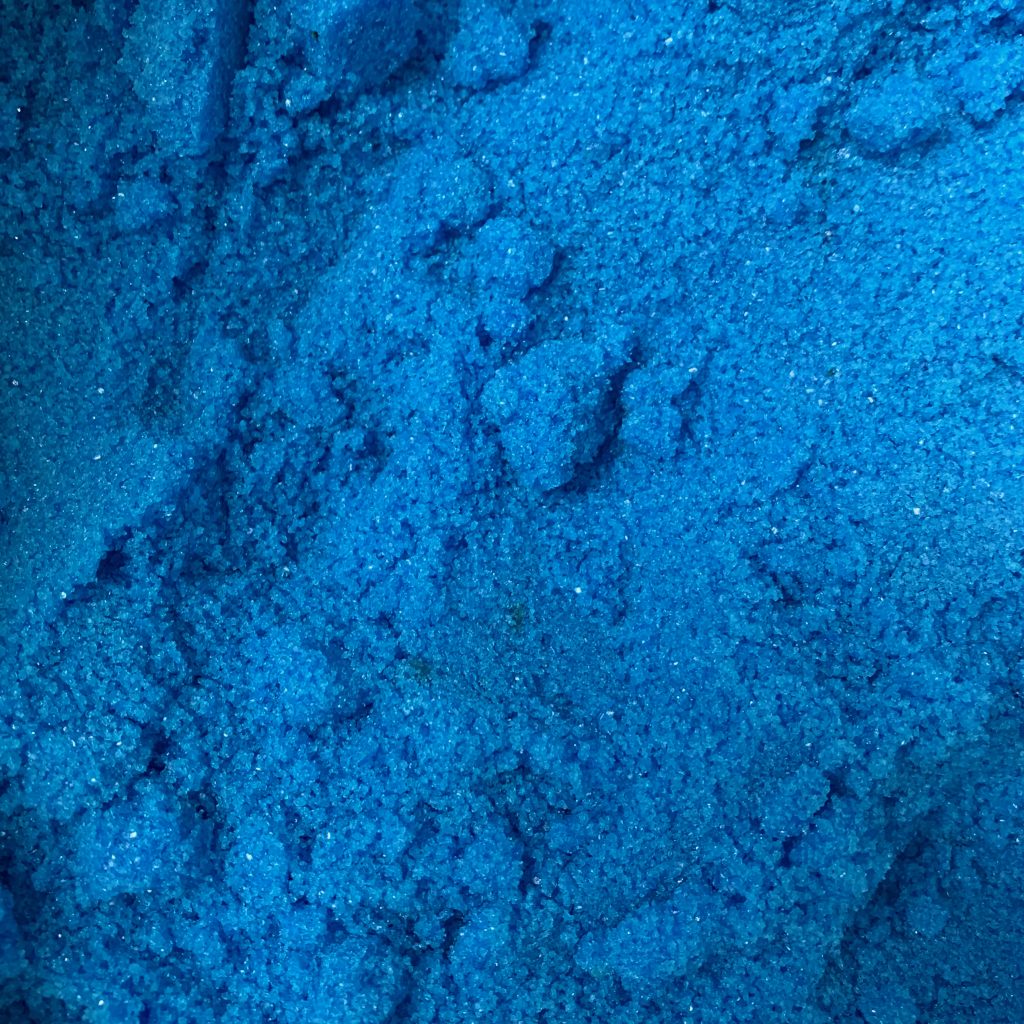


During the last days, I spent quite a lot of energy preparing plates for etching. I am working to prepare a work on paper that will be also a tactile experience, the preparation involves different metals, sanding, and polishing. I am learning how to approach the different surfaces, their acoustic responses, and tensions.
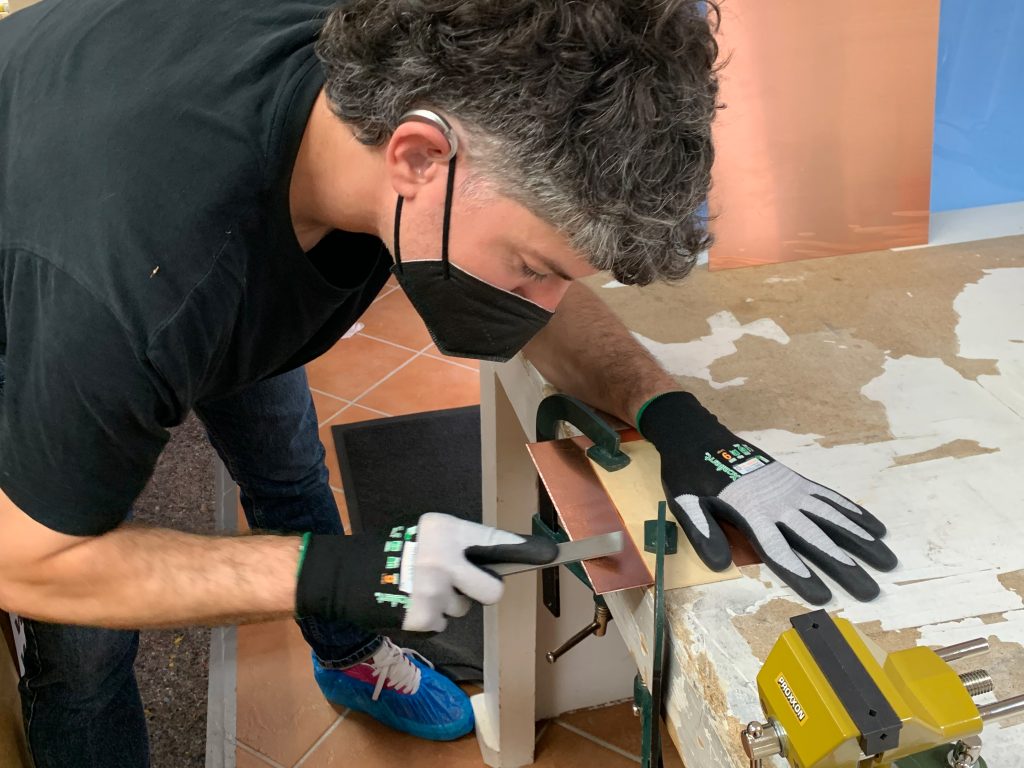
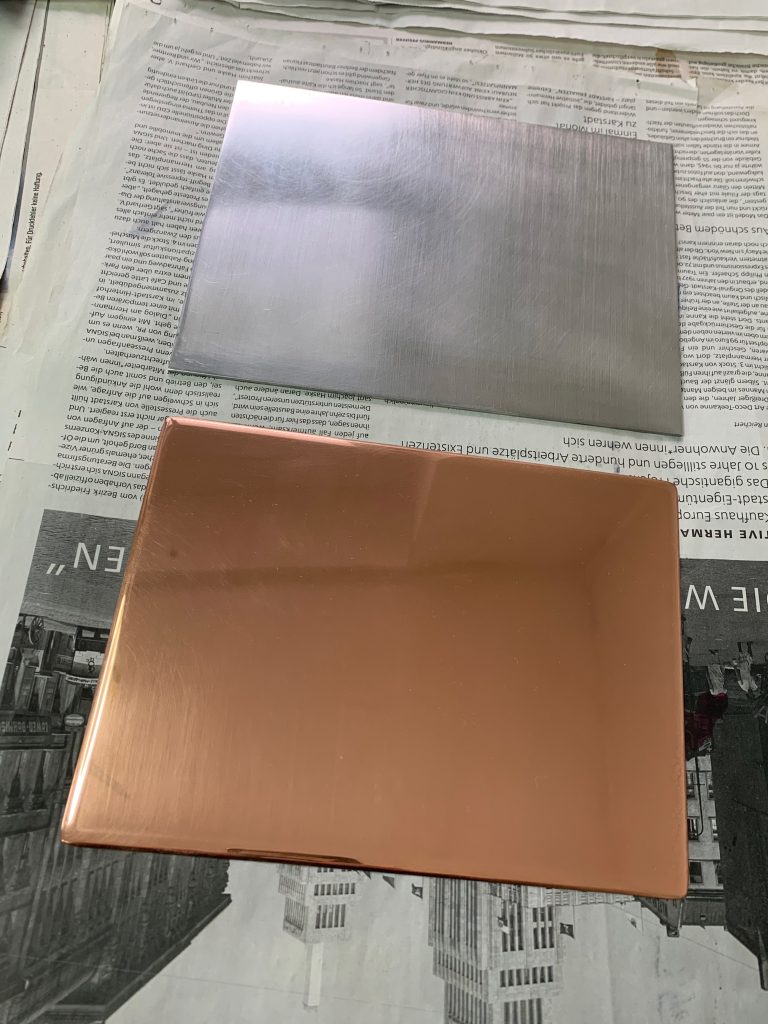
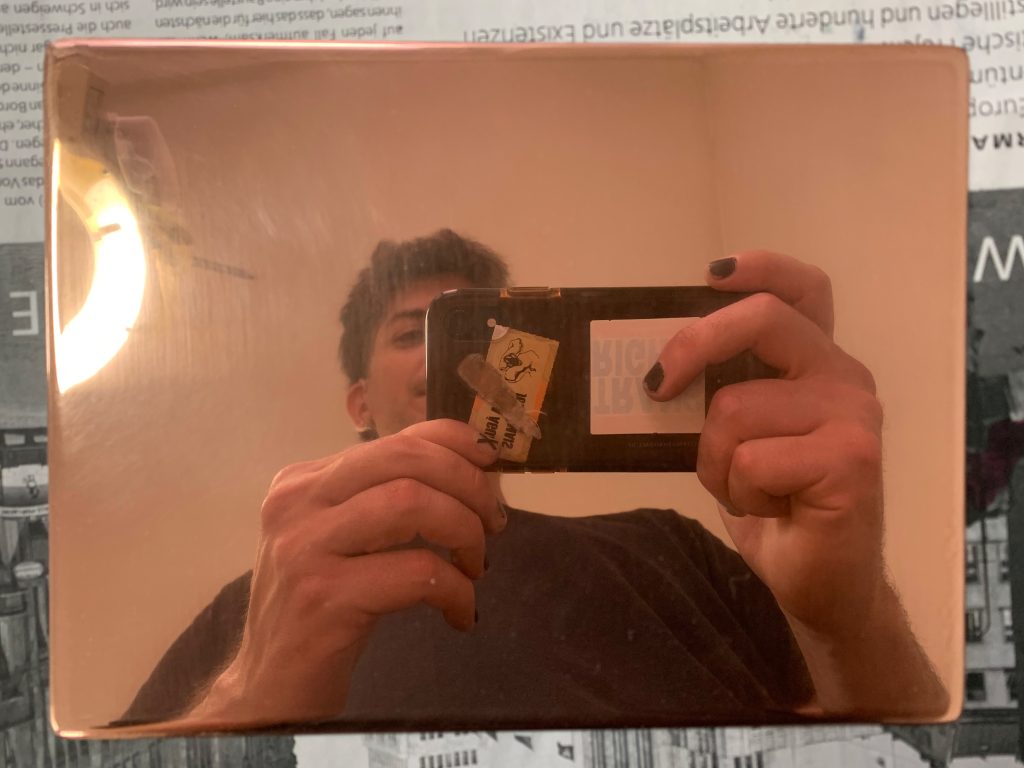
Is it possible to separate our thinking of sound from the ear? If the ear is not experiencing all of the sonic spectra how can be understood that the human body and the cyborg body can be resonators, captivating vibrations that communicate sounds through a distributed nervous system? I am looking at the digital devices that we are using in our daily life and all of those have a “silent mode” turning sounds into haptic responses. Little bells grayed out logo or crossed out speakers. Still, those feel loud, vibrating, calling for our attention.
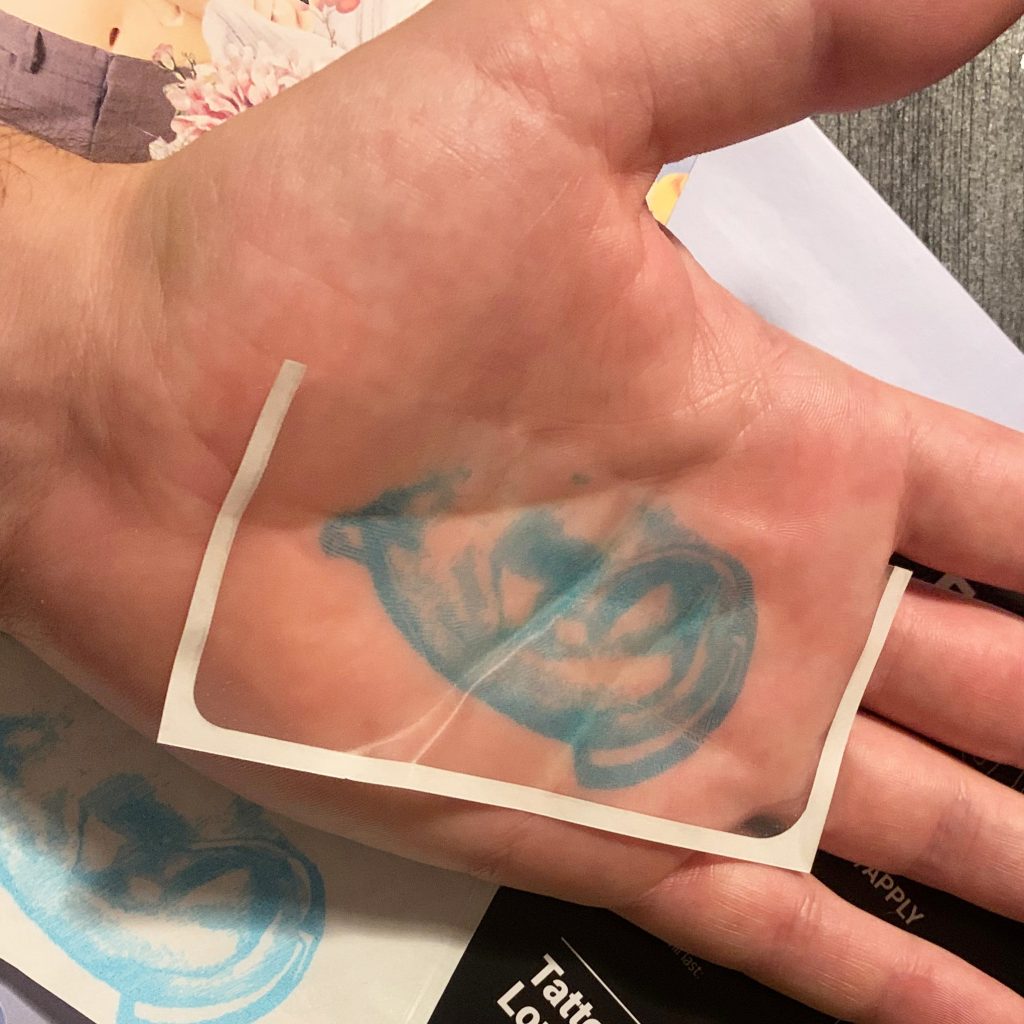
Understanding the sound beyond the ear made me think of disappearance at first. Then I started to reposition my ears on the other parts of my body where I am experiencing sound. Exposing ears all over our skin to remind each other that is not only the tympanic membrane that understands sonic space. Ears all over the body, it is a cyborg’s proposal.
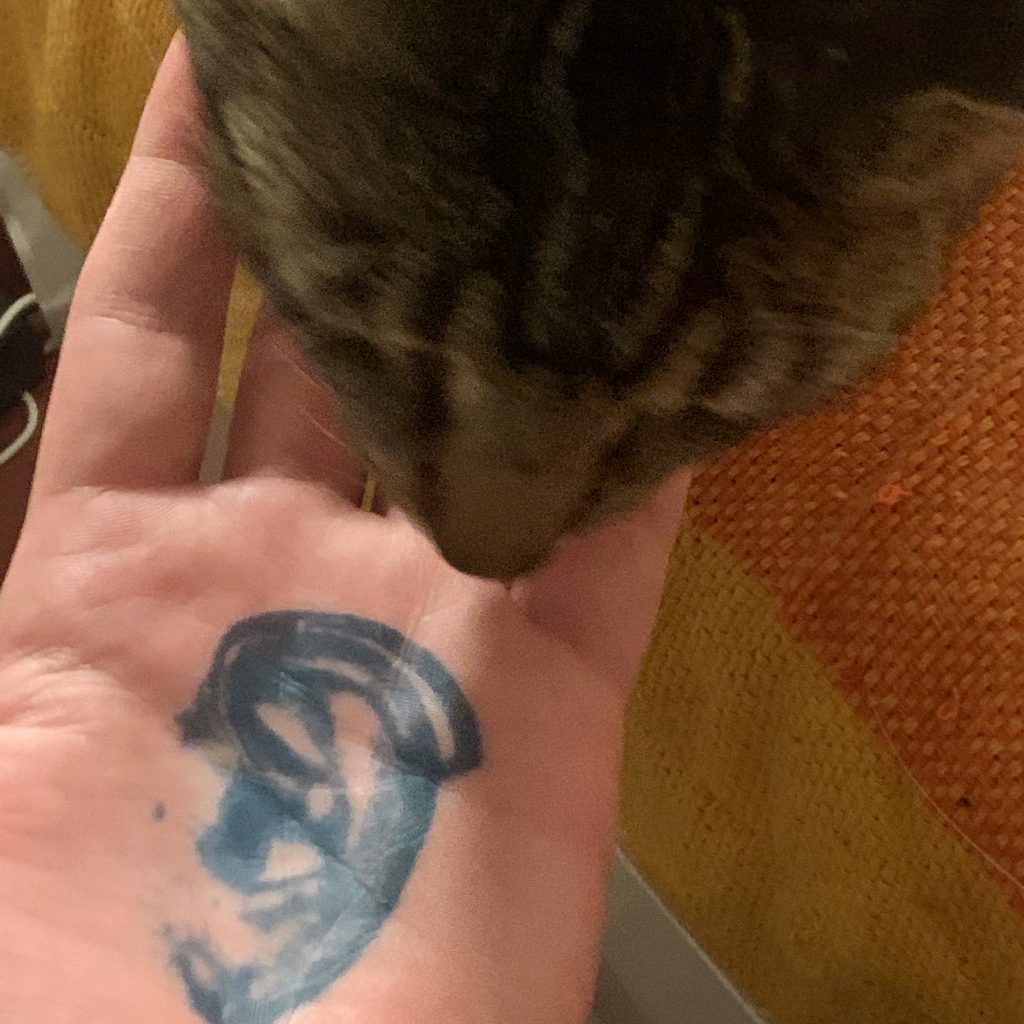
I am quite unhappy with the first sketches but I wanted to be transparent with the process, I am going to work with different outlines.
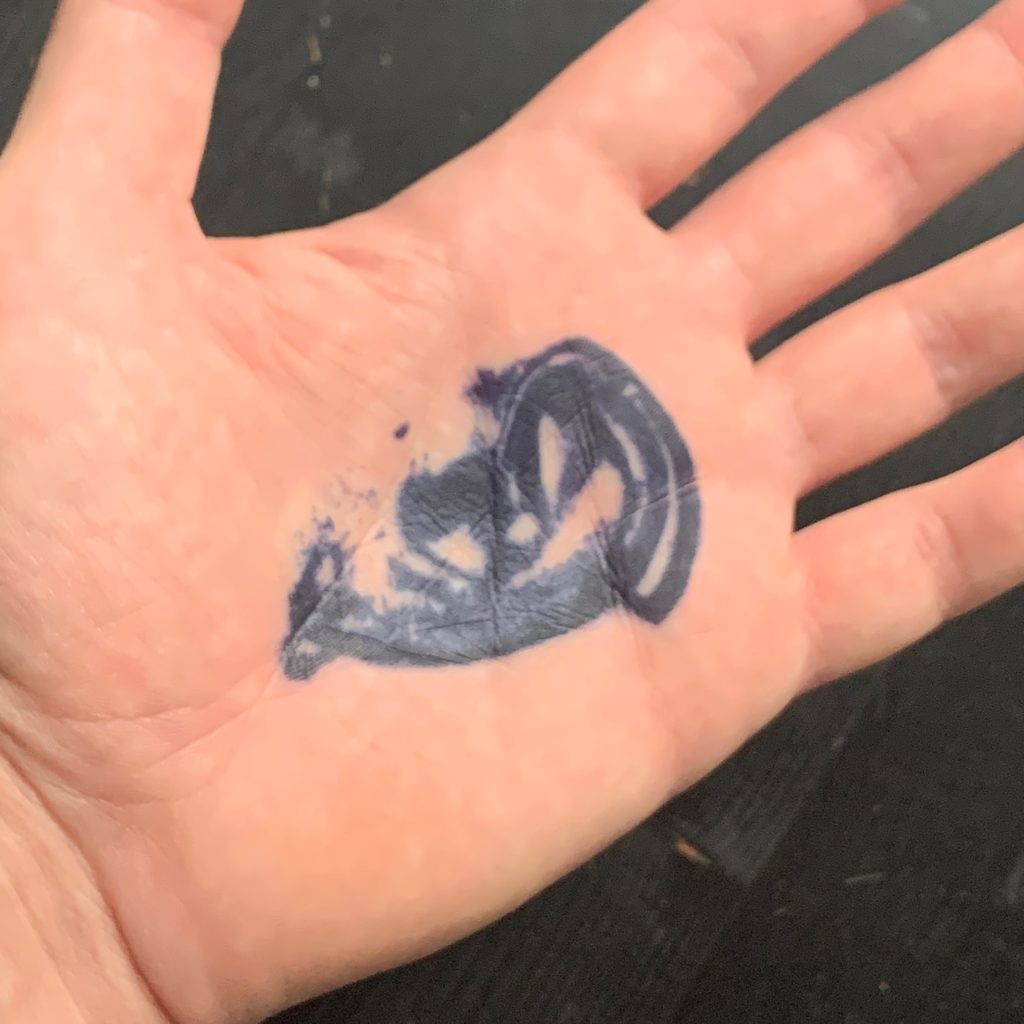
This is a proposal for a podcast series conceived as a meeting point for non-hearing and hearing communities. It can be seen as an attempt to open space to communities that have been excluded since the early development of radiophonic transmission and long-distance voice-based communications. While writing these notes, I cannot stop ruminating about the historical intertwining between the invention of voice-based long-distance communications and the efforts that some of its pioneers dedicated to affirming education models today described as oralism and their eugenics roots. Another stream destabilizes my thinking, its banks I try to summarise as an understanding of progress impossible to tear apart from a general cult of profit and its pervasive spread controlling mass media. I have memories of radio broadcasting being dismissed in my childhood as a historical heritage in favor of television. Now that the internet has created a favorable momentum for digital radio, I must admit that the absence of advertisements relieves me. Nevertheless, my comfort is often unaware of hidden profiling techniques, whose consequences we experience beyond marketing purposes in unprecedented political persuasion.
Is it possible to imagine a podcast, a digital radio, as a welcoming place to share and an enjoyable zone where the agency of the community is perceived outside the systematic targeting of consumers? And how should this place be? I must write that I am feeling many biases while formulating a proposal from my subjective position to imagine a collating space for communities that have been systematically separated during the consolidation of liberalism’s political imaginaries. I can only find myself on an experiential threshold between hearing and non-hearing communities, with an unbalance toward the hearing group having received only an oral education. Somehow I hope this idea will be seeded by collaborative thinking, crumbling this early individuality exercise and taking it to a format that feels more representative of both communities involved.
Please allow me to approach world-building in radiophonic space as an embodied methodology, for the now, starting from the user’s access needs. A radio station conventionally offers a stereo channel audible mix, and the mixer is in the hand of the producer. I am suggesting offering part of it to the folks that will tune in; this digital radio can be a six channels stream with:
1 – music stream;
2 – metadata stream, with lyrics, info on the tracks, and descriptive captioning;
3 – oral-based broadcast;
4 – oral full transcript and captions;
5 – sign language based streaming;
6 – sign language full transcript/captions.
I see the imbalance in my proposal where four channels are reserved for creating access-centering oral and hearing-controlled discourse; as anticipated, I am preparing to rework this in the context of a collaborative thinking exercise, inviting d/Deaf broadcasters to articulate this idea better. I can imagine a parallel sign-language-based channel for streaming poetry and storytelling and experimental artistic expression, but I am not taking authority to define a sign-language space; I only feel how much this is needed, along with captions and transcripts to make these contents accessible to the non-signing audience.
Until now, this proposal encompasses a technical format because it aims to dismantle the ableist power of a technologically exclusive medium. I feel this operation is valuable only in the context of curating practices that aim to address ableist circuits of power. I suggest looking at the “working definition of ableism” published and updated on Talila A. Lewis’ blog and “developed in community with disabled Black/negatively racialized folk.” TL helps us see ableism beyond the disabled community, within a proper intersectional approach that is a much-needed filter to explore solidarity around the curatorial thinking of contents to share in this broadcast. As mentioned at the beginning of this proposal, this radiophonic space can exist only if a collaborative thinking exercise happens. I hope this exercise will produce a curatorial kinship in preparing each chapter that does not repeat the usual and unnecessary institutional pledge of creating access to interpreting unidirectionally created content. This is extremely important to me, and I hope it resonates with the title of this proposal. “Mixed feelings” is also underling the necessity of a choral practice where dissonance must be welcome, operating an attunement that does not seek homologations nor blanket agreements.
I hope I will soon have the chance to tune in to a music stream while reading captions from a signing artist, exploring thresholds that aim to bring solidarity across existing cultural barriers.
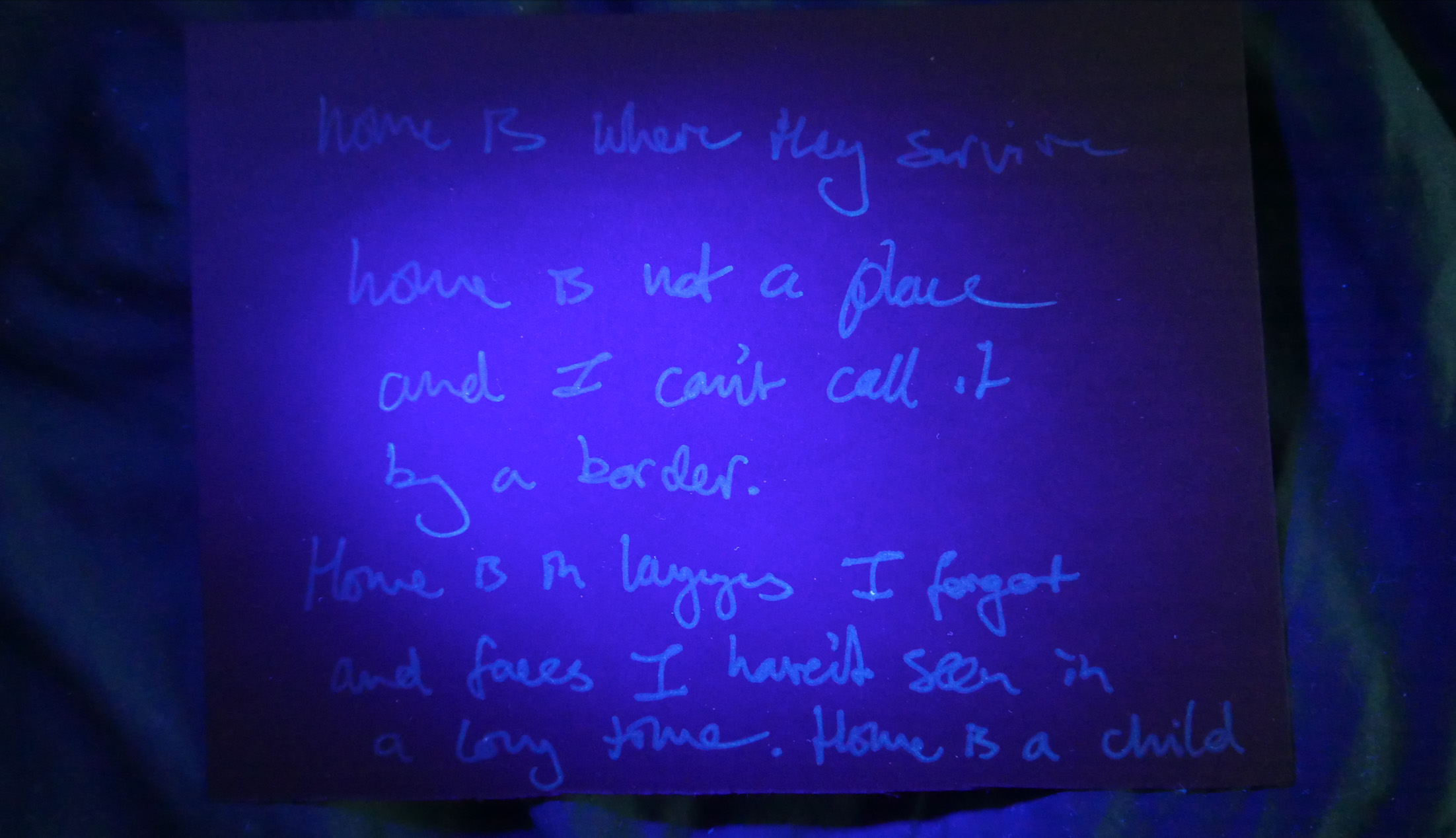
“home is where they survive.
home is not a place and I can’t call it by a border.
Home is a language I forgot and faces I haven’t heard in a long time.
Home is a child”
– anonymous / Oct 2021 / Citizens of Nowhere exhibition – NOW gallery.
I’m in Folkstone this weekend as part of New Queers On the Block and Last Friday’s Folkstone. I’m presenting an ongoing project called HOMECOMING which I started in 2019 the year before lockdown, and have been continuing throughout. The project is based on a simple question
What does home mean to you?
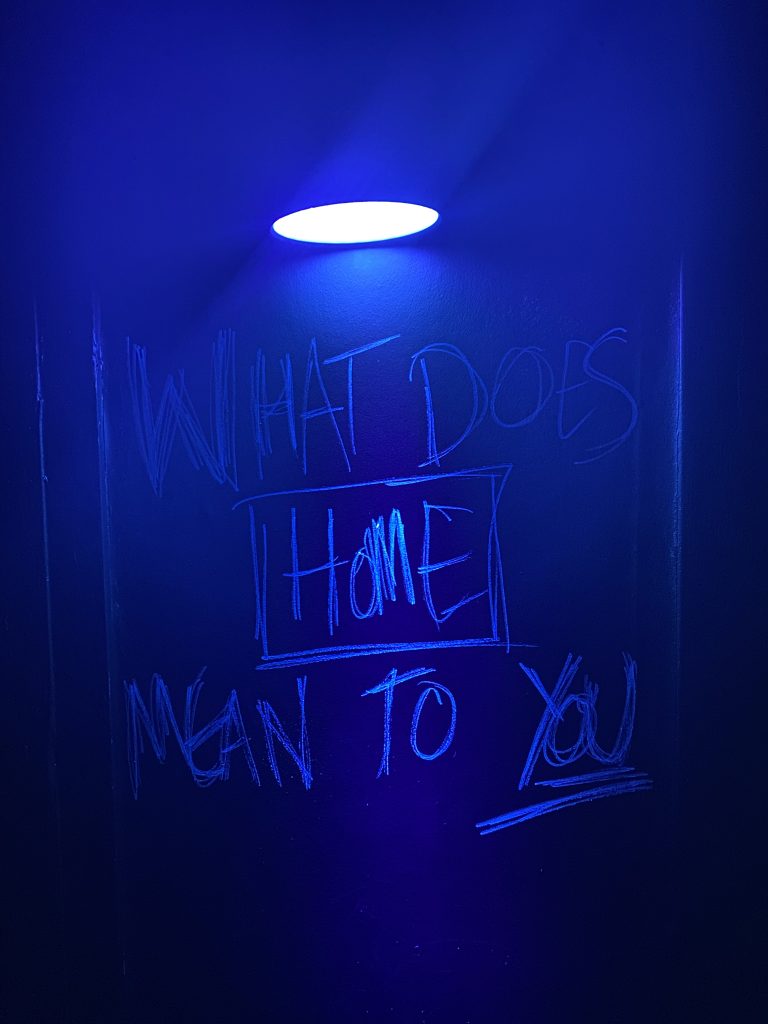
And anyone, from the general public, young or old, are invited to contribute using UV pens (invisible ink) in any language they want, drawing or writing straight onto the blacked out walls of buildings. This iteration see’s the work being presented at DNA in Folkstone and has in the space both this participator installation and one of my digital iterations (short film) made of the project ‘Homecoming; A Placeless Place‘ on loop. The film was made during the global lockdown and with the general public in Scarborough, UK.
Here’s a little video of the set up of the installation:
On Sunday evening we will do a ‘reveal’ event where UV torches and lights will be offered to participants for us to collectively find out what’s been offered by the public, on these walls.
Really looking forward to Sunday.
DNA space / Folkstone / 6.15pm / Chats, Chai, Film Screening and Baklawa will be shared.
The project is on going and I hope it continues to get to different parts of the UK with ambitions to take the project internationally. We all have a relationship with the idea of Home and for me, this is a conversation I find endlessly fascinating. I want to make more films around this and hopefully, in years to come, put all contributions from so many different towns, cities , countries and spaces, and publish a book about it.
Sometimes, people can be so vulnerable. If you offer them the space to be…
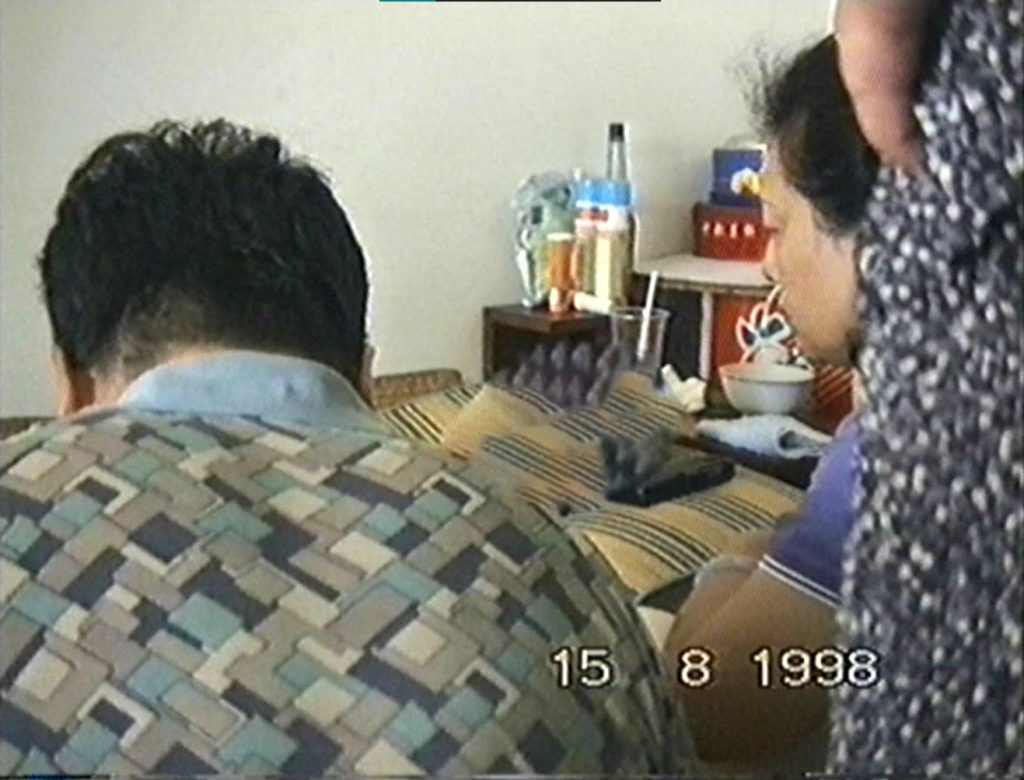
This was in the early ‘digital days’. I was outside the frame of this image but I was too young to remember what was going on in the moment. It wasn’t her final day (or year), but we all knew the process had begun its course. Although I don’t remember, internally I feel relieved I could be there and that I still have a connection to these moments captured. It’s agonising to rewatch these videos and feel the emotional atmosphere through a lens but then this happy accident happens in the video where one of my cousins covers the frame for the rest of the video completely unaware. I appreciate the sudden invisibility, not just because of the relief, but it’s in that moment I’m reminded that my grief for her is physically embodied and no longer attached to the visual medium or its definitive capture of her.
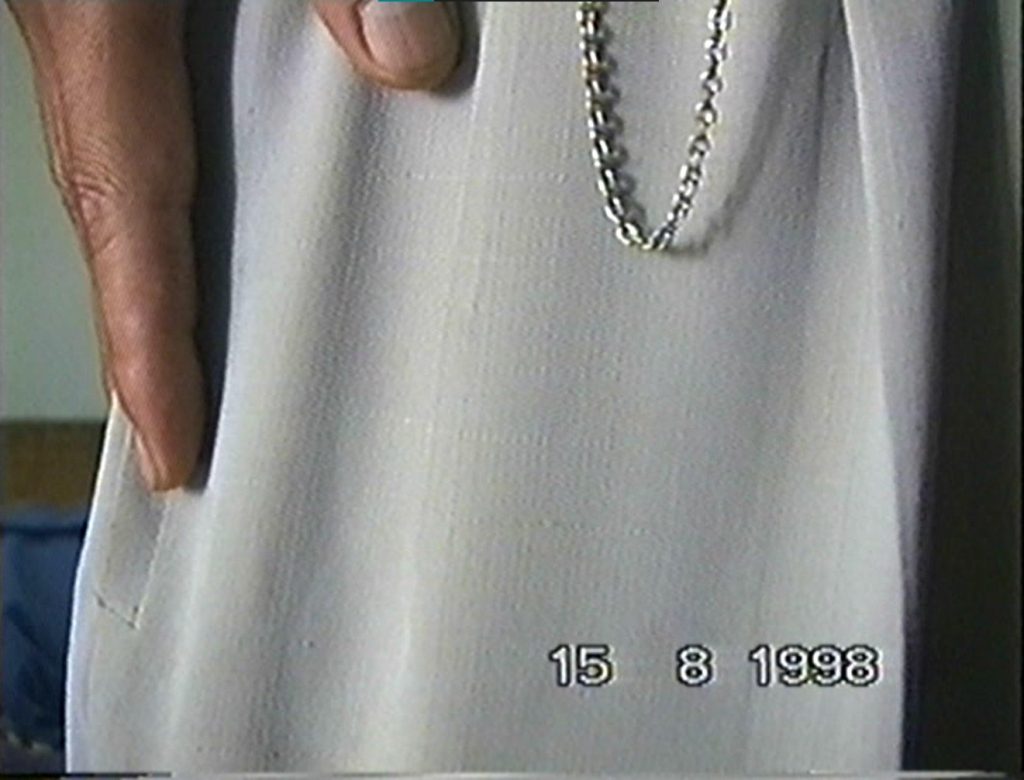
Carmen Hermosillo aka humdog was a huge advocate for technological innovation and computer networks in the 80s/90s, until 1994, when she published ‘Pandora’s Vox: On Community in Cyberspace.’
Her writing remains relevant to this day when examining the digitisation of our deaths and identity ‘immortalisation’ online. She argued that the use of computer networks do not lead to a reduction in hierarchy, but actually the commodification of personality and a complex transfer of power and information to corporations.
In this sense, all of our interior thoughts (taste, preferences, beliefs, fears) are commodified, and has manifested into what we know today to be the algorithm that caters to our likes and interests. And so, when it comes to our digital death and footprints we leave online, it essentially becomes packaged and sold onto other consumer entities as a form of ‘entertainment’. What I mean by entertainment is that the cyberspace is a blackhole – it absorbs our energy and personality to create an emotional spectacle. This is practiced by businesses and marketers who commodify human interactions and emotions, such as Big Tech corps we already know and exist on.
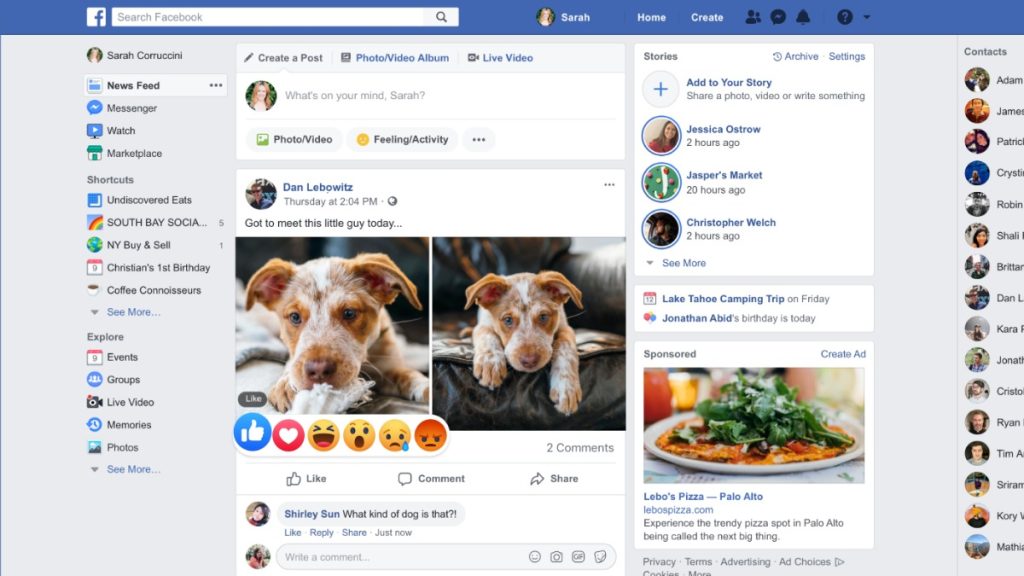
Taking this image of someone’s FB newsfeed as an example which I think is an interface we are all very familiar with, there is a bizarre quality to our online interaction on this platform. In early 2022, I was invited to an online memorial service of a dear friend which was also livestreamed on Facebook. What I found a little bizarre is that this is the same platform where I read daily news headlines, see meme posts, cat videos, friend’s holiday photos, and relationship updates.

Similarly, this is relays back to humdog’s essay about ourselves becoming commodified and release of agency. I have never learned to mourn or remember someone via an entertainment platform, yet this is becoming the norm.
Spiritual or sacred spaces of worship such as churches, mosques, synagogues, temples, graveyards, contain a certain element of solely fixating on the cycle of life and death with symbolic elements such as praying, worship, repentance, burning of incense, hearing cymbals and gongs, chants, and much more. What’s important about these practices is not the act itself but how it is choreographed with a community.
With these daily practices slowly fading since we have digital platforms to accommodate memorial services and distant attendance, it leads one to wonder whether these traditions will maintain its grip in the next 10, 20, or 30 years, or will it have merged into the chaotic mix of entertainment consumption where we exist under the illusion of a ‘community’ online.
If I told you that my name should be spelt Istabraq but that at the borders of this country, those deciding the status of my family using a language which struggles to identify it, didn’t have patience enough to actually say.my.name…
Would you believe me?
Estabrak. It’s official. I mean, English tongues can say it.
Iss-tub-bruq is how it’s pronounced. And A rough silk only found in heaven is it’s meaning.
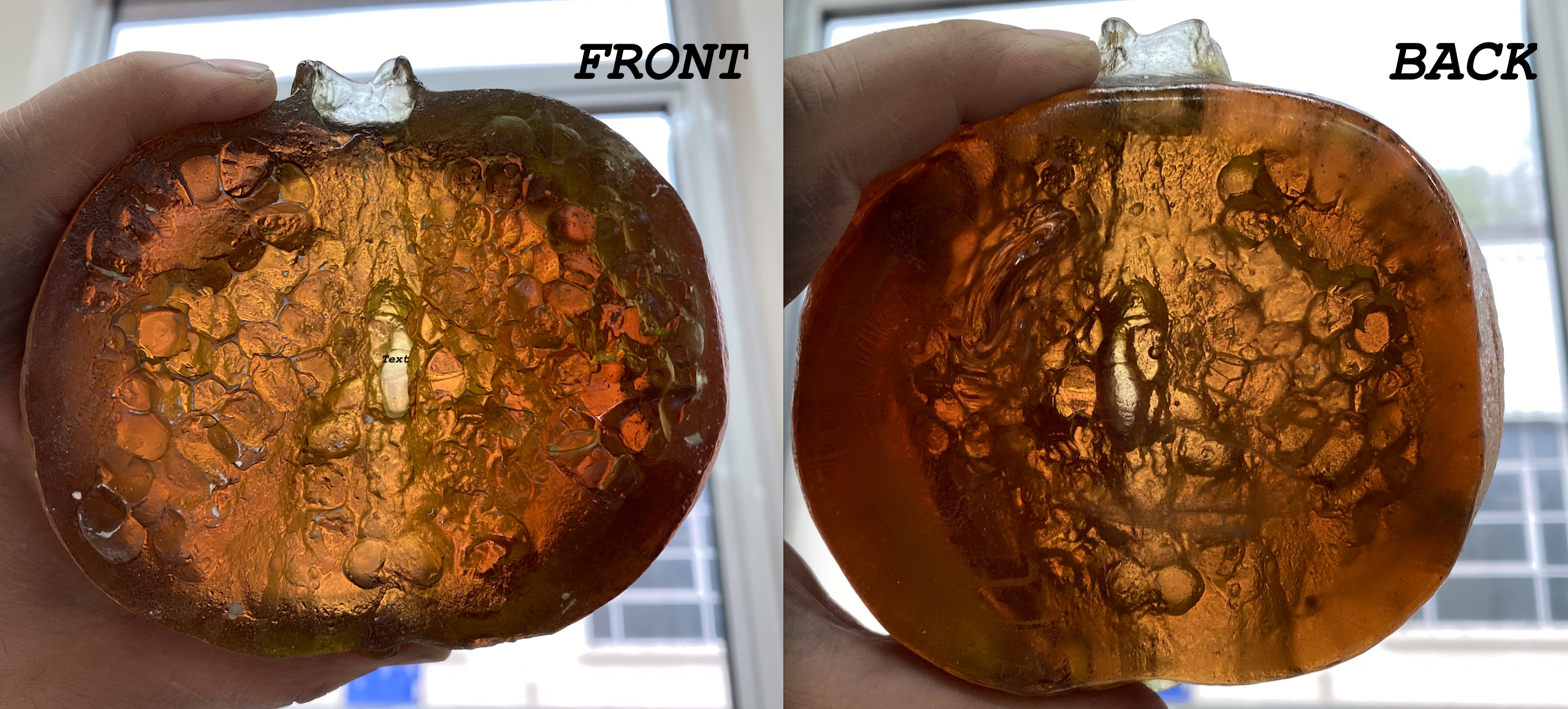
Because I haven’t been posting anything on my socials since late 2020, not many people know I have been exploring the medium of glass for some time now..
Pomegranates have been one of the subjects of exploration as they are a fruit which I believe deeply resonates with the politics of the region in which we (myself and the pomegranate) are both from – West Asia.
Although beautiful and with so much potential, they have also been deeply intertwined with colonial politics and their once poetically dominant meanings in herstory, value, nutrition, mythology and ancient tales of fertility have been hijacked by misplaced ideas of warfare and destruction.
“What is less apparent is the fruit’s relation to modern warfare. Stemming from the 12th century Anglo-Norman pome gernate, our English pomegranate became pume grenate in Old French. This pume grenate eventually became pomme grenade in Modern French. Pomme grenade, of course, looks exactly like grenade or hand grenade, and this is no coincidence.” -ALTA
This short post online, written some time ago now, offers a clear and straight forward definition of the complexities of this fruit.
“So why name the weapon after the fruit? If you were to crack open a hand grenade today you would see tiny balls of shrapnel inside the explosive’s casing. The shrapnel mimics the pomegranate’s seeds—each seed the potential for a new tree, each shrapnel the potential for a hit body. Shaped like a pomegranate and designed like a pomegranate, it’s certainly ironic that a weapon used to kill several people at once is named after the ancient fruit of fertility.’
It makes sense why so many Asian & African artists have used the symbol of a pomegranate to respond to white peoples wars in our homelands and countries. This language and extraction imposed upon an indigenous fruit of West Asian land is just another example of the consistent existence we must live that straddles the line of life and death, danger and beauty, the possible (fertility=future) and impossible (war=erasure).
There is so much to say about this subject.
To bring it back to the work in progress I have shared above, to me the back side of this glass pomegranate looks like the insides of a human body. Almost like lungs attached to a skeleton, I am in awe by the simplicity and clarity light can offer. Light is such a fascinating natural element.
I’m not quite sure what will come of this work I am exploring, but I know I’m working towards a language within my glass work which translates so effortlessly with my works in water and interest in the often complex and sometimes ephemeral experiences of the human condition.
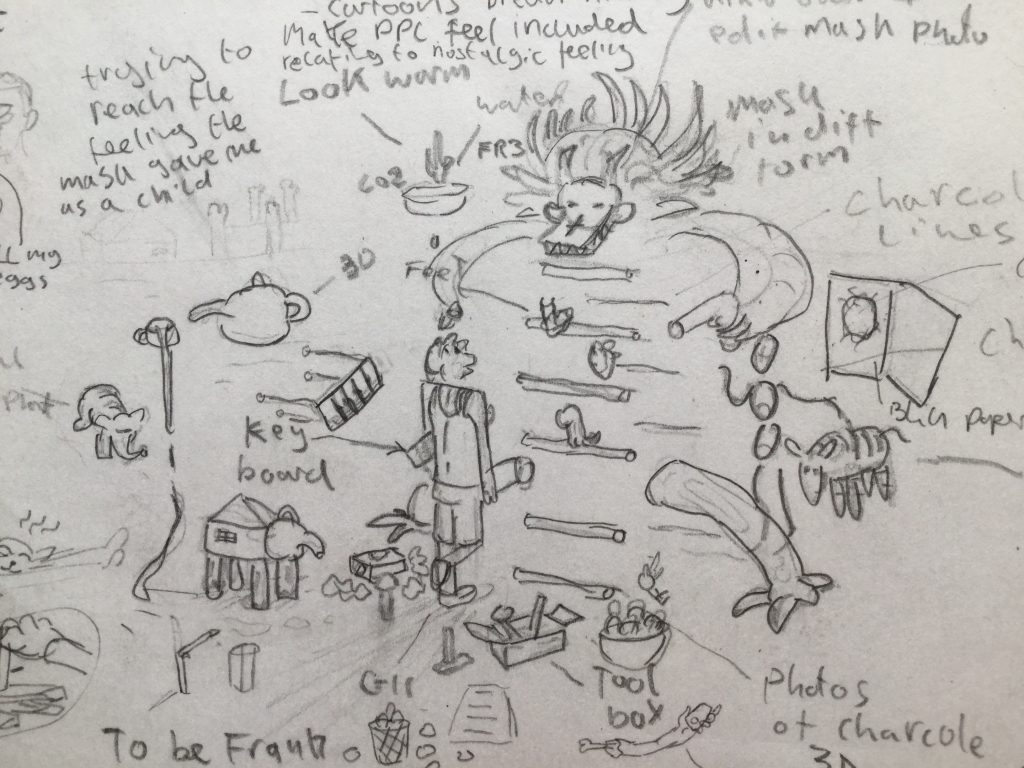
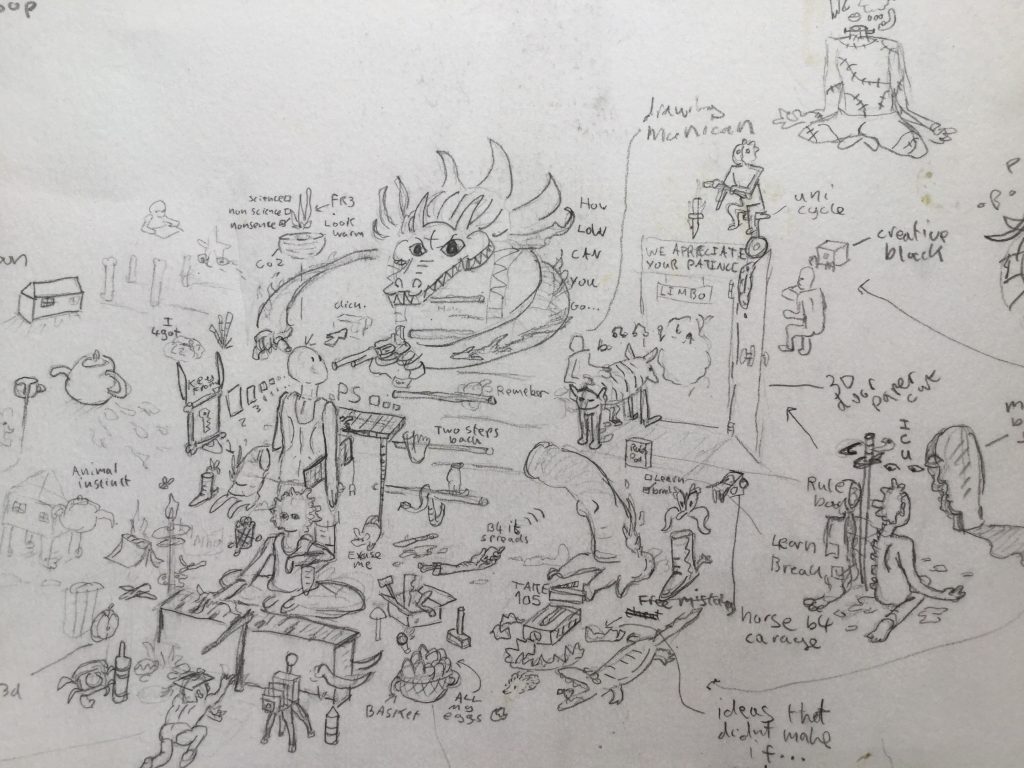
I saw this residency as an opportunity to create a follow up to my 2021 “Thought Experiment”. I started with these rough sketches, my approach was to just put pencil to paper, work off instinct and see what comes on to the page. My thinking was what the subconscious comes up with will always be more interesting to me then any idea or subject I could consciously come up with. I called the artwork “In Limbo”, looking back I think this was manifested from the feeling of worldwide uncertainty since 2020. But realised during this project it also related to the creating process itself, hitting on that mid point in creating something that I think many artist can relate to. When you’re unsure which direction the project is moving or if it even makes sense, like you’re just hanging in limbo to see if things will come together or just fall apart. Being dyslexic i’ve always had a love hate relationship with words, in a lot of my artwork I like to play with words and images and the relationship between the two. Which got me thinking about the word “limbo” and its two meanings, one being hanging between life and death and the other being a party game. I liked this huge contrast between the two meanings and realised what they had in common was an element of balance. Like a train of thought the word balance led me to thinking about a number of other concepts that I ended up exploring throughout the artwork: The balance of digital and traditional art I focus on in my work and how it relates to how I always try and balance and bride the gap between “high art” and “low art” to make artwork that feels less exclusive. The balance of skill and creativity artist use to create, and even more personally the balance of being mixrace and how it means simultaneously being two things and neither at the same time. I wanted every part of this project to reflect that process of creating embracing how erratic and messy it can be.
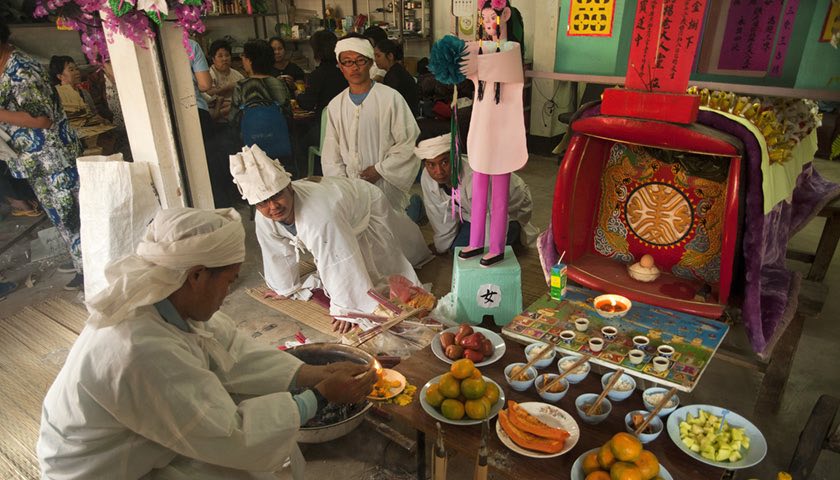
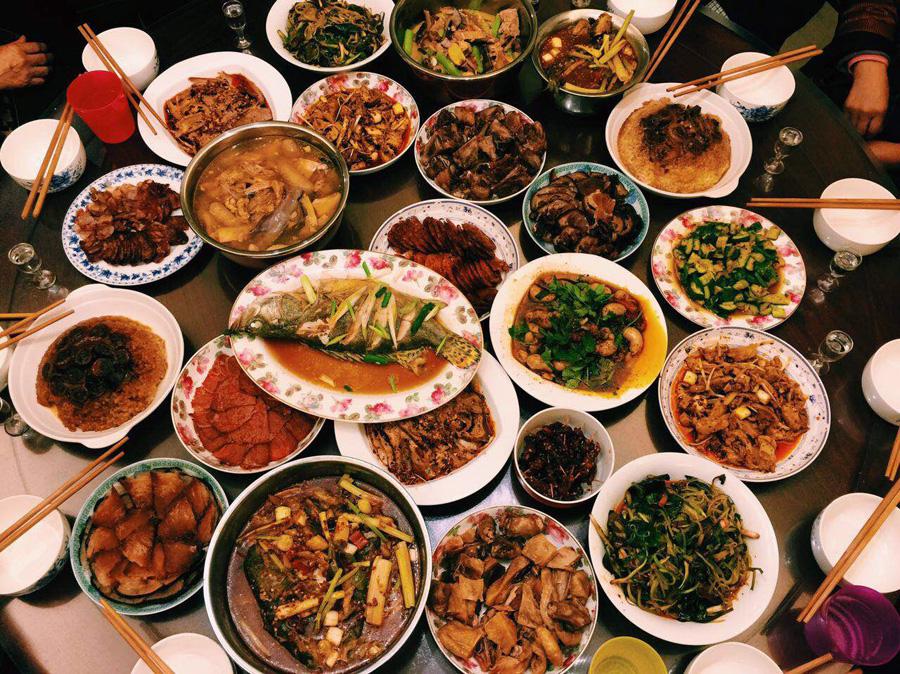

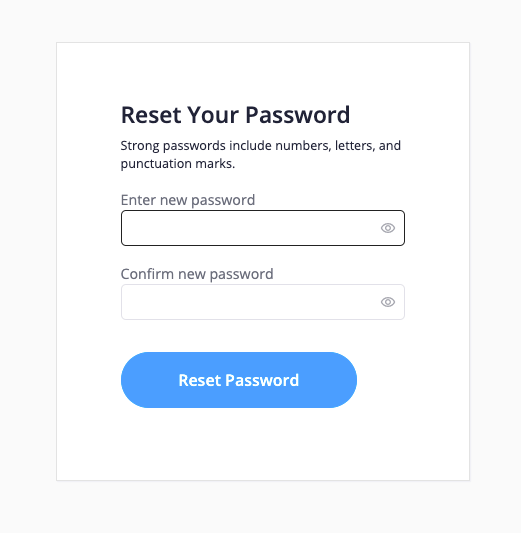

I had some exchanges about my work lately, which made me think a lot about the language we use. I feel it is essential to avoid using categories like “visual art” because the comfort zone these words secure is rooted in some profoundly excluding average agreement. Whenever we repeat “visual arts,” we are not communicating any precious information about the artistic practice or the subject of the research; we create a perimeter that bond a conventional understanding of sensing with the privilege of having access to the specific creative experience. It feels like an exclusive category that only announces who will be admitted to the experience of art.
I doubt that the normative understanding of our senses in most European languages is exhaustive so that we can define artistic experiences with those words. The long literary exercises we regard as ekphrasis express this struggle to translate the senses. There must be more if so much effort has been put into describing the experience of a painting in words or music beyond a simple equation of the normative understanding of the sensing.
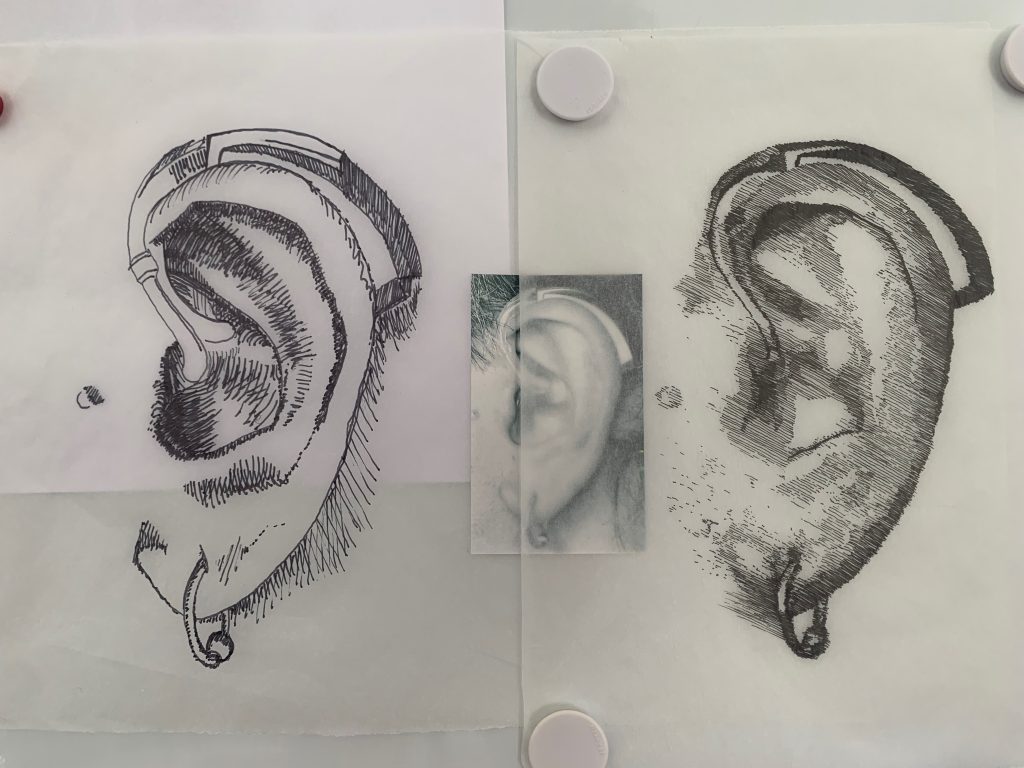
Most of us are familiar with feeling the sound in haptics. It happens with low frequencies and subwoofers, our stomach and lower belly eat the frequencies, and our breath becomes a continuum with the sonic frequencies. I am sketching ideas to explore the thresholds of the sonic experience, the visual, and the haptic. I am looking for the uncanny territory where I am not finding the right words to describe the knowledge that is materializing; a questioning space where allegories may comfort us and doubts may guide our un-learning.
Sometimes I dream of ancient worlds where fruit and bombs have never mixed. Where family, love and freedom co-exist.
Where blurred lines of nourishment and destruction do not need to exist.
Where culture no longer negates safety. Sometimes, I dream of this.
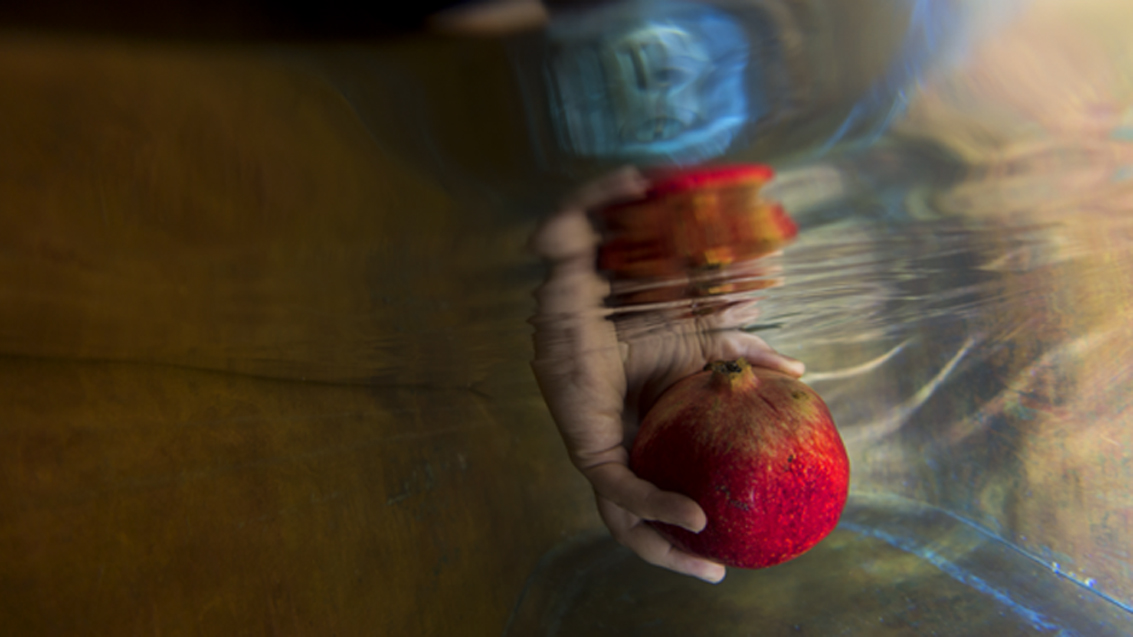
Image info:
Estabrak // Ummi (meaning My Mother in Arabic) 2021/22 // Archival print under Acrylic Glass, mounted on Aluminum Dibond // Edition of 3
ABOUT: Another offering I’d like to share is of one of my most recent underwater images. It’s a self portrait, and one which was taken in a time of deep isolation and a work which also translates into other works I am currently exploring.
I’ve so much to say about pomegranates, their heritage and the importance of them in West Asia. The significance of it’s name and the body in which it expresses. There’s so much beauty and passion in this fruit, yet so much destruction attached to it.
For years I’ve noticed it’s presence in West Asian arts, yet it’s only been in isolation with internal conversations where I’ve found my relationship to it develop from one of a human eating fruit into a life lesson in history, language, colonisation and love.
Pomegranates have origins all over West and South West Asia, although it can specifically be traced back to Iran. Iran has huge significance to me as it was the place I was born, in exile after my family were forced to flee Iraq.
I’m going to go in more detail about the significance of pomegranates in a separate post which you can find in the research section of my studio, but for now I hope this offering can plant a seed of thought for you as much as it has for me.
The photograph and text were shared earliar this year via the Emeargeast exhibition ‘Dreaming Tomorrow’. And the image Ummi belongs to a current and ongoing multidisciplinary project called Letters To Ummi (Ummi meaning My Mother in Arabic). It is the first image in this series.
